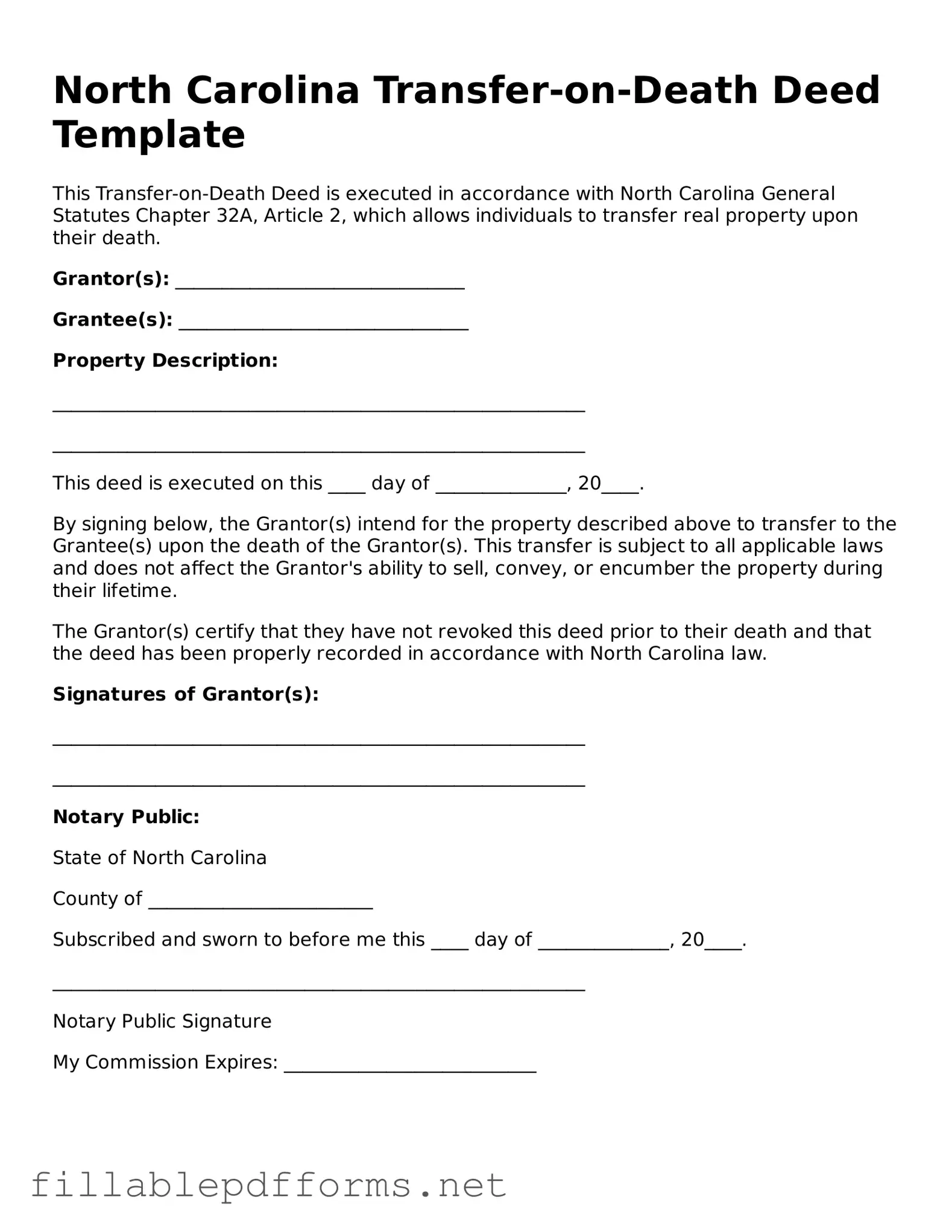Attorney-Verified Transfer-on-Death Deed Form for North Carolina State
The North Carolina Transfer-on-Death Deed form allows property owners to transfer their real estate to designated beneficiaries upon their death, without the need for probate. This form provides a straightforward way to ensure that your property goes directly to your chosen heirs. Understanding how to use this deed can simplify the transfer process and help avoid complications for your loved ones.
Launch Editor Here
